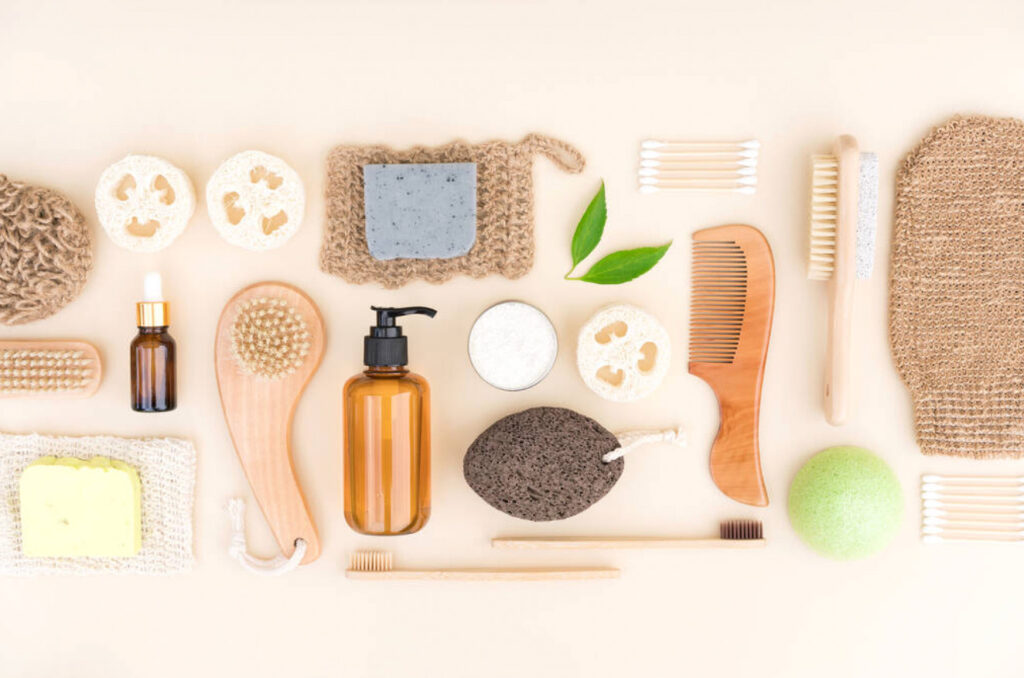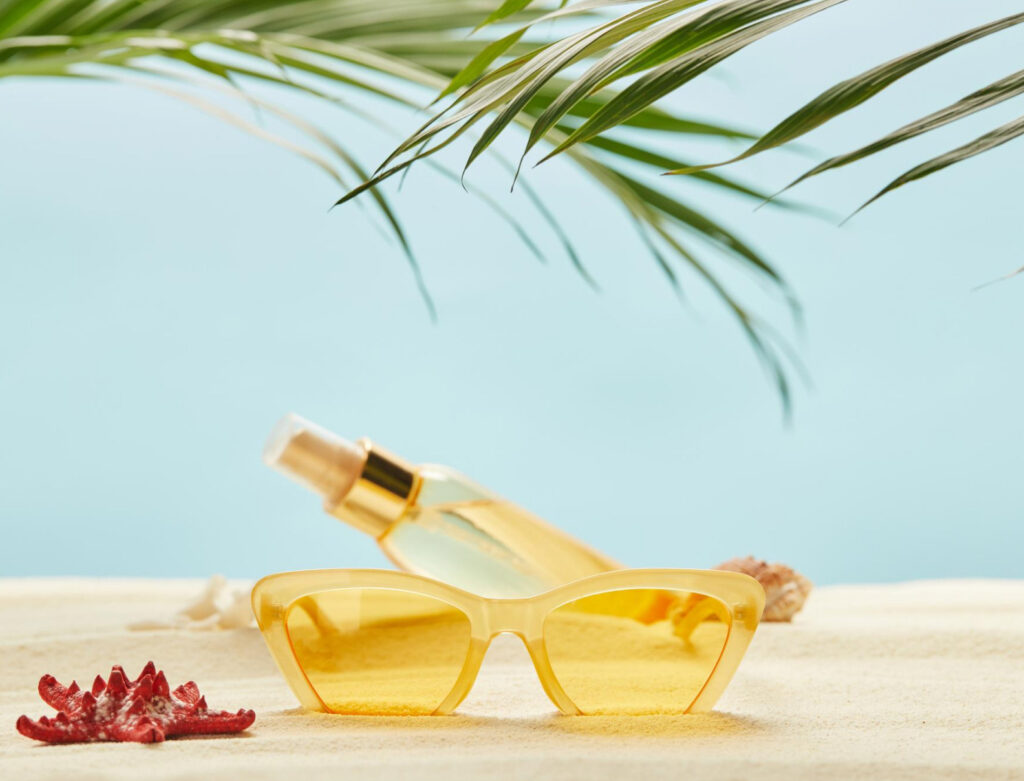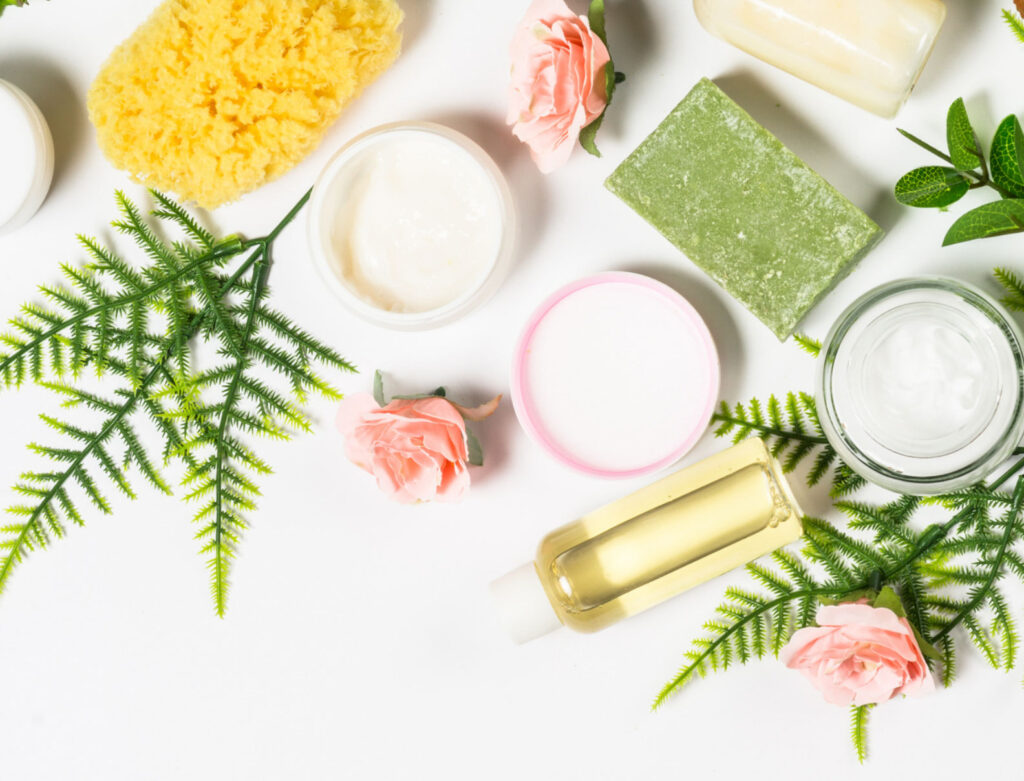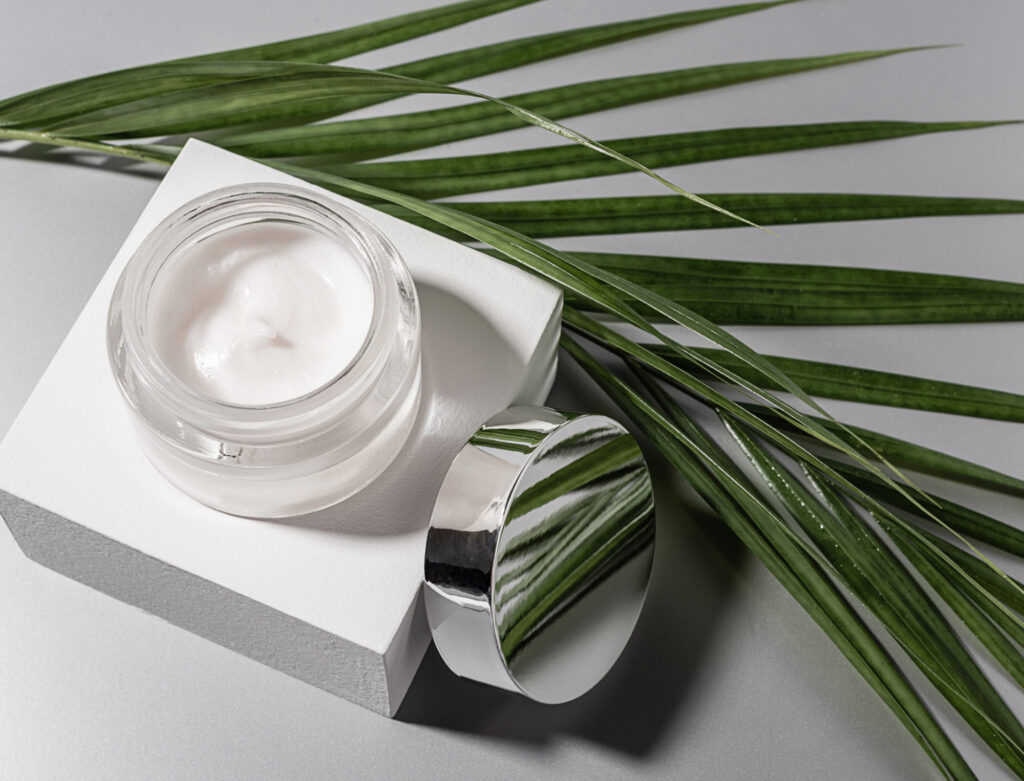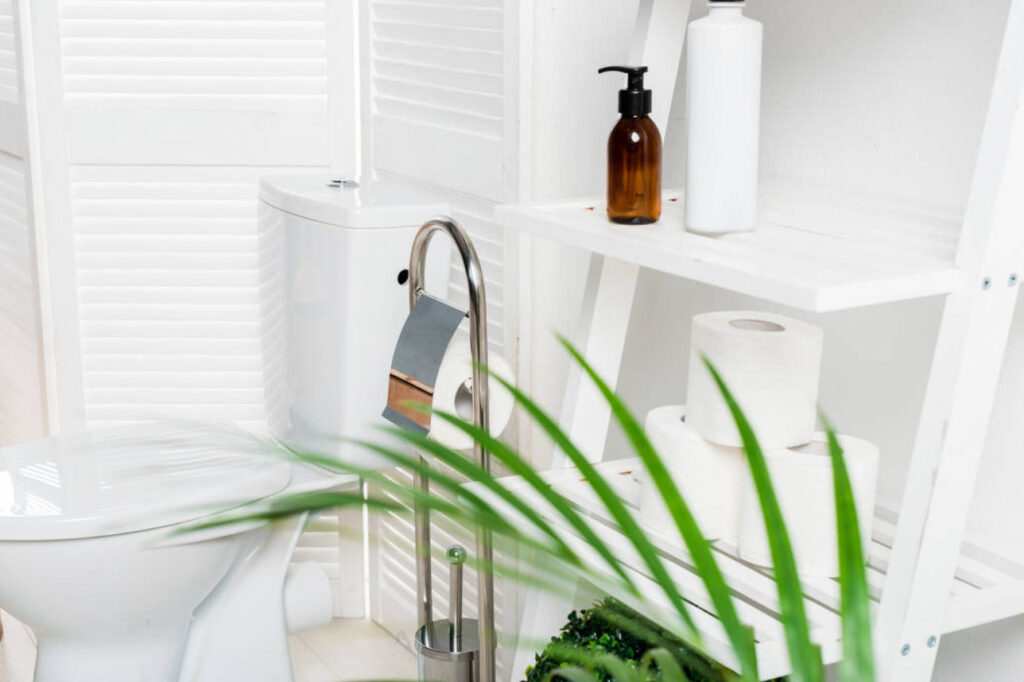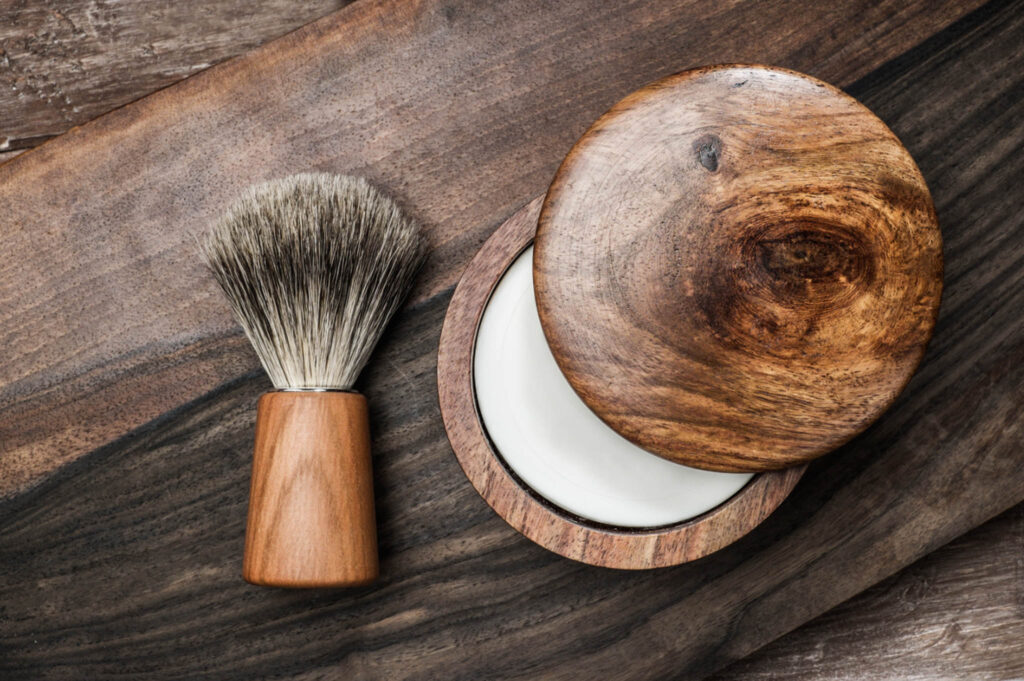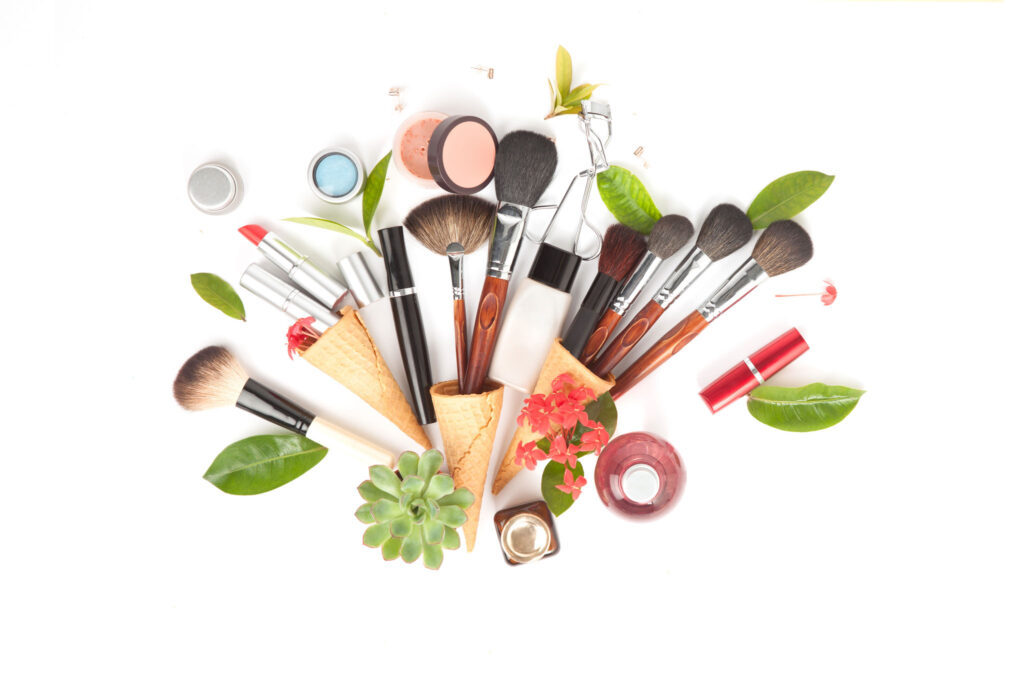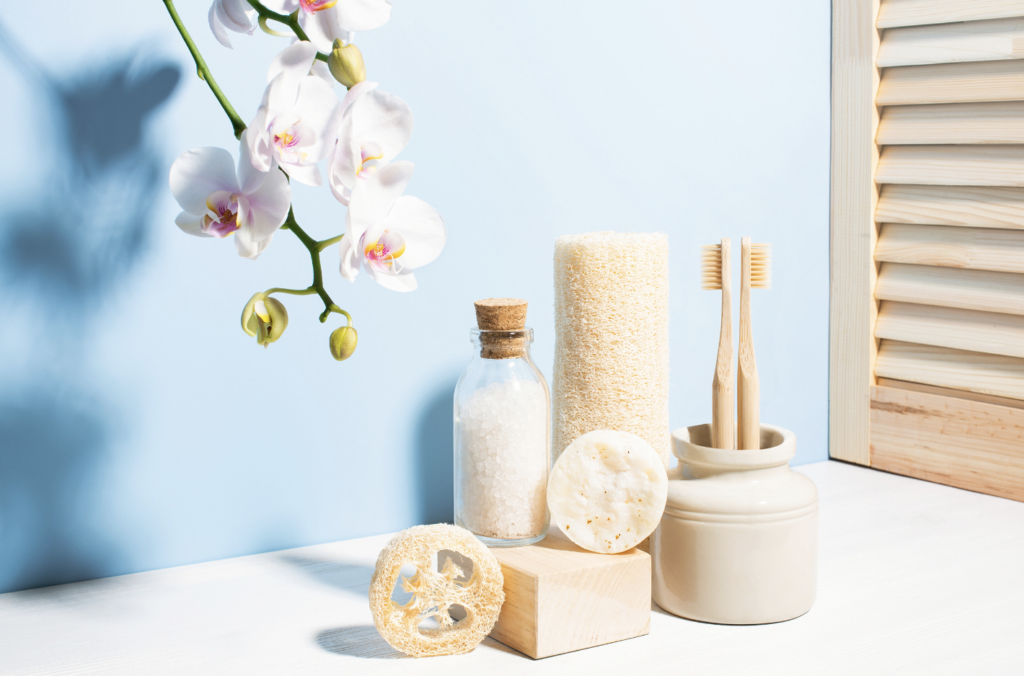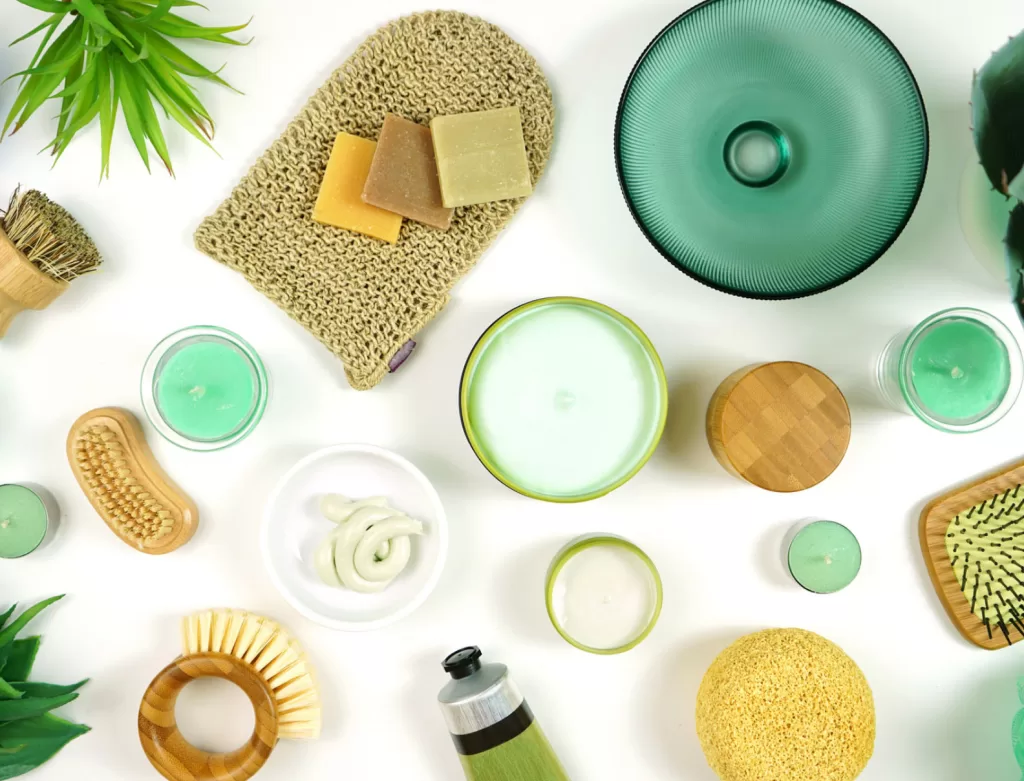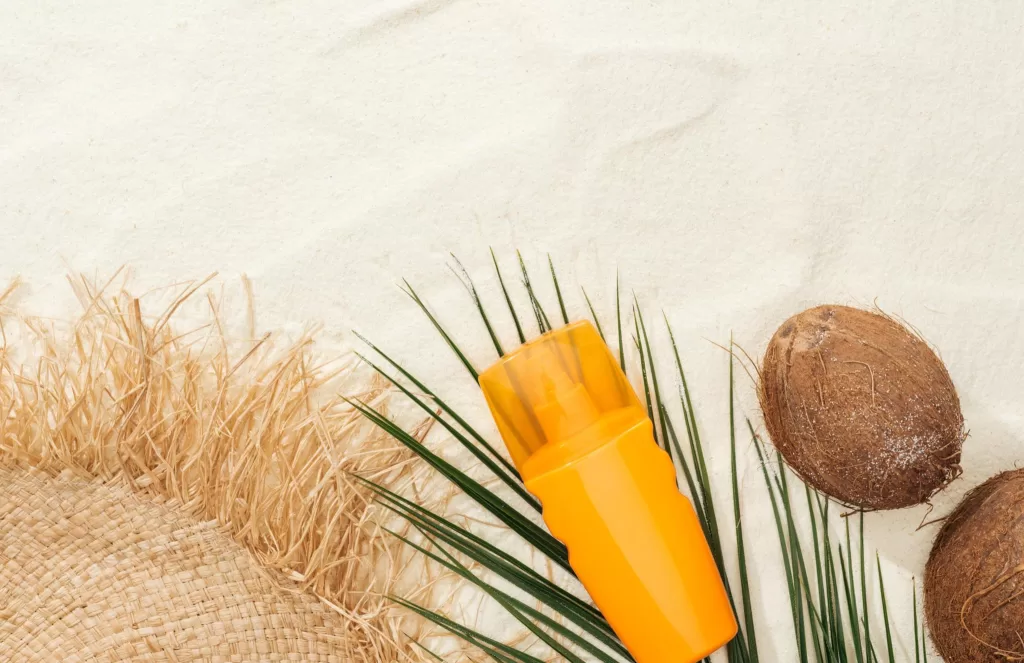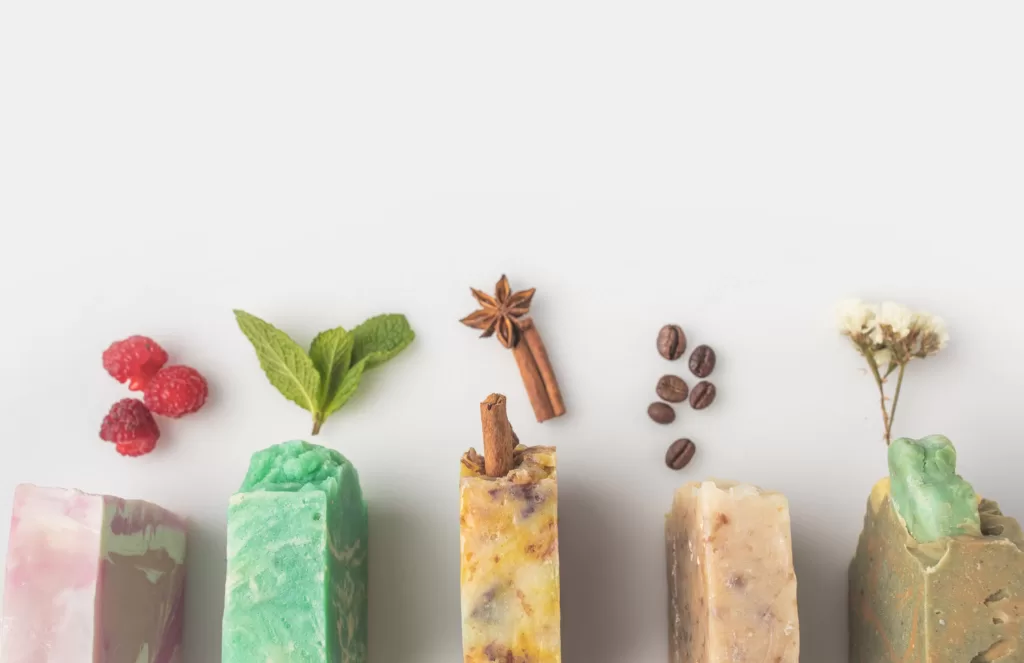Ultimate Guide: Sustainable Health and Beauty
Estimated reading time: 12 minutes
Environmentally friendly and sustainable health and beauty routines aren’t unachievable. Although many people choose minimalist beauty routines when trying to be sustainable, this doesn’t have to be the case. There are many eco-friendly cosmetics, health, and hygiene products out there, not to mention ways to create your own. Let us help you make your daily routine environmentally and socially responsible with this ultimate guide to sustainable health and beauty!
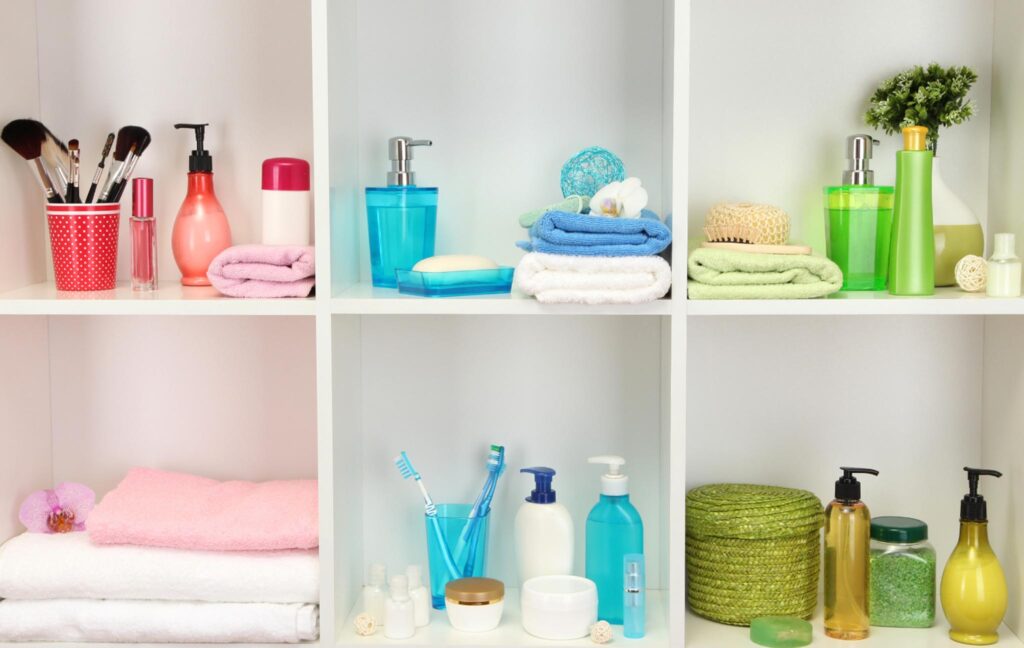
The good news is that the sustainable beauty industry has started recognizing consumer demand for certified organic ingredients and more sustainable beauty product packaging. The green cosmetics movement is well underway!
When choosing the products we need, we should always consider a few general principles for a sustainable health and beauty routine. From dry shampoo to reef-safe sunscreen this ultimate guide will help you take small steps to become your most successfully sustainable, healthy, and gorgeous self.
key takeaways
- Practice “skinimalism” – the most sustainable item is one you already own. When it’s time to replace a product, follow these clean and green beauty tips and clean beauty practices to ensure it’s a sustainable choice.
- Buying from a local store that makes its products in studio helps reduce transportation emissions.
- Supporting brands and businesses that take their employee wellness into account is crucial.
- Refusing products that contain plastic in any form is the biggest step to creating sustainable wellness routines.
- Natural and organic beauty ingredients are key! Chemicals don’t belong on our body or down the drain.
- Beware of greenwashing! Check for Sustainability Certifications or evidence or a strict sustainability policy on a brand’s website.
- Like DIY? You might even try creating your own health and beauty products!
jump to any section:
Buying Local – Environmentally & economically sustainable!
Support Social Sustainability – Ethical business practices start with a code of conduct.
Say No to Plastic Waste – Say goodbye to excess or unnecessary packaging and hello to a refillable container.
Let’s Talk (Natural) Ingredients – Toxins, carcinogens, and other chemicals don’t belong on your skin.
Beware of Greenwashing – Is that “eco-friendly” product truly sustainable?
Materials Matter – What your tools are made from makes a difference for the future.
Create Your Own – There are so many DIY alternatives to try!
Other Considerations – Less waste is better, and caring for and correctly disposing of the unavoidable is essential.
Buying Local
Remember that sustainable development comprises three “E”s – ecology, economy, and ethics. Buying locally-made health and beauty products might help you cover all three of these in one fell swoop.
Purchasing a product that is manufactured nearby ensures that emissions from transport are decreased drastically. Finding out if the ingredients are locally and ethically sourced can also increase the product’s sustainability.
It should be pretty easy to ask about these practices when buying locally since you’re likely speaking to someone in person when making your purchase. Once you’ve found the right product for you, your purchase also helps your local economy. Win, win, win!

Support Socially Sustainable Beauty Brands
Our first thoughts about sustainable beauty and health products are probably geared toward environmental initiatives more than anything. But it’s important to remember that sustainability also involves a social aspect. When we support companies that employ ethical sourcing practices and responsible production, we are taking the proper steps toward sustainability. Sustainable manufacturing must take more than the carbon footprint into account.
You can find a super-inclusive master list of eco-friendly ethical cosmetics and health and beauty brands at Sustainable Jungle.
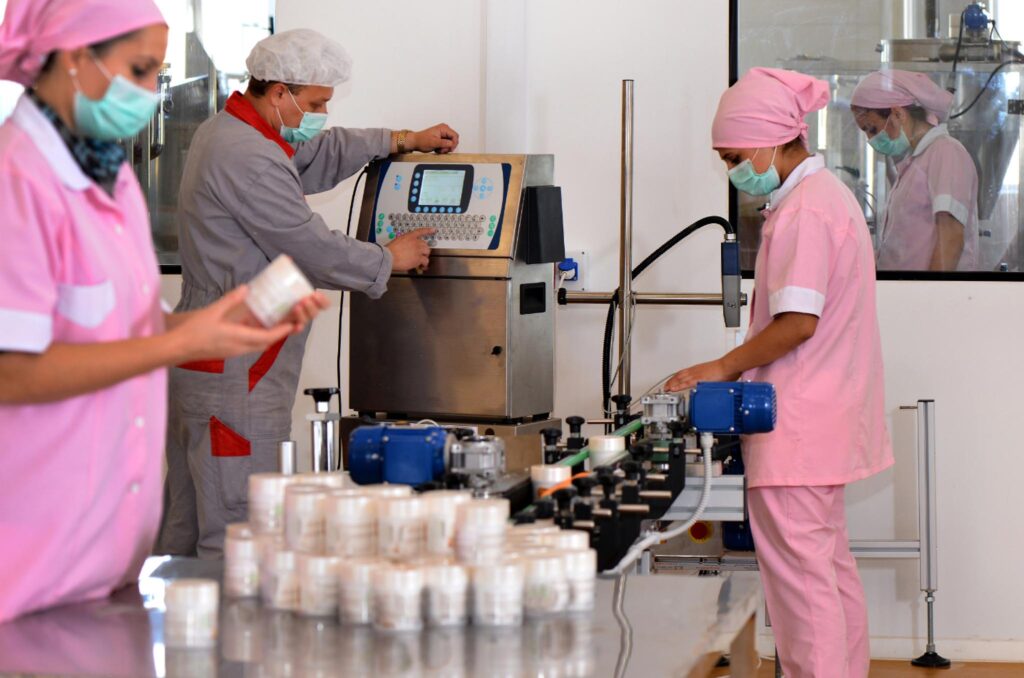
It is our responsibility as customers too – do some research about their ethical manufacturing practices before you give your support to a cosmetics company.
Say NO to Plastic Waste
Now, let’s talk about the packaging waste of products. Anything that comes in non-recyclable packaging should be left on the store shelf. It probably shouldn’t even be on the shelf in the first place, but I digress. If it’s wrapped or held in single-use plastics or non-recyclable plastic containers, practice the “refuse and resist” of the 10 Rs of sustainability and keep walking.
Sustainable packaging
There are many alternatives that cosmetic companies are now exploring for more eco-friendly packaging. Look for sustainable packaging such as post-consumer recycled materials, and biodegradable beauty packaging solutions such as bamboo, beeswax, cornstarch, or seaweed packaging. If the beauty companies that make your favorite products offer refillable bottles or containers, that’s also a terrific choice. Packaging waste can be a thing of the past!
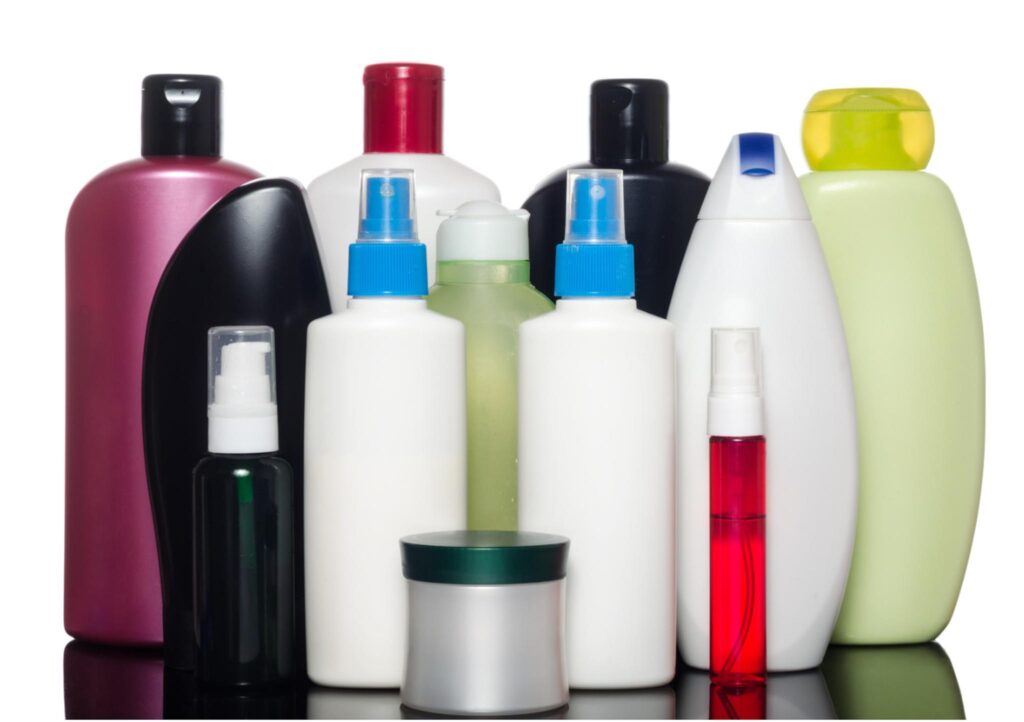
If you want to learn how to be plastic-free in your beauty routine, you can read this article from our website.
Let’s Talk Ingredients
Next, let’s consider the ingredients. The cosmetics industry has relied heavily on synthetic chemicals in the past, including liquid polymer plastics and microplastics! I don’t know about you, but I think putting chemicals and carcinogens on my skin is a major problem. Based on a study done by the David Suzuki Foundation, the Dirty Dozen toxic ingredients that are often found, and should be avoided in sustainable beauty products are found below.
The Dirty Dozen
“BHA (butylated hydroxyanisole) and BHT, (butylated hydroxytoluene), Coal tar dyes: p-phenylenediamine and colours listed as “CI” followed by a five digit number, DEA-related ingredients, Dibutyl phthalate, Formaldehyde-releasing preservatives, Parabens, Perfume (a.k.a. fragrance), PEG compounds, Petrolatum, Siloxanes, Sodium laureth sulfate, Triclosan.”
Since this is not easy to memorize, I keep a copy of this list in my phone so I can check the labels of the products on my next purchase. Feel free to copy-paste and do the same!
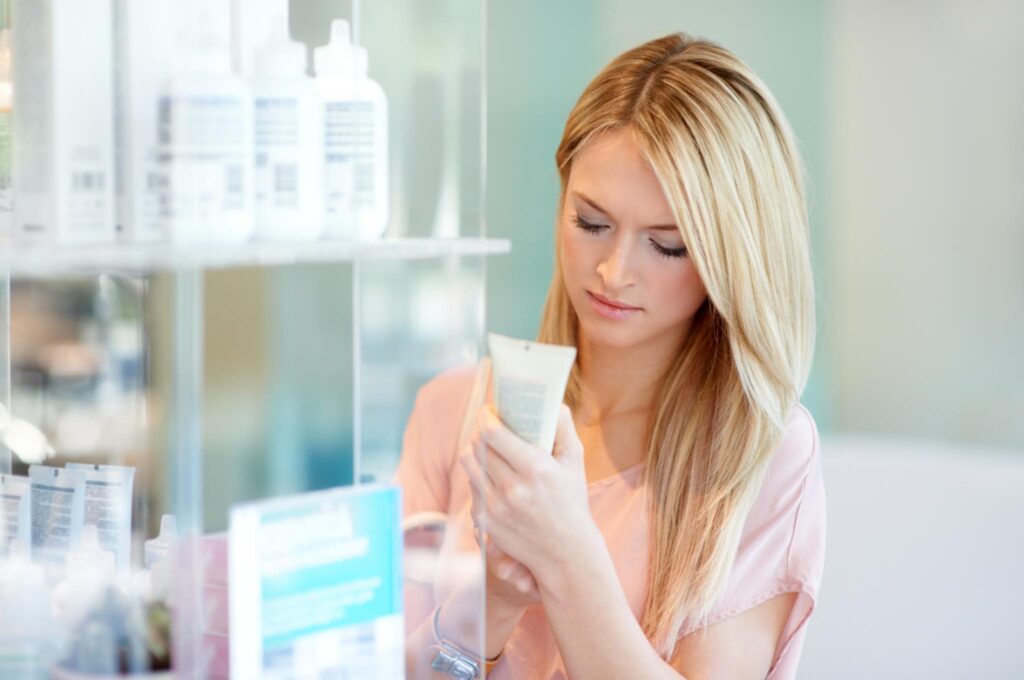
From cancer-causing to hormone-disrupting, none of these ingredients need to be in the products we use on our bodies. Not to mention the environmental effects through water pollution when these are washed down the drain. Did you know that even toilet paper contains harmful chemicals? Find out some alternatives to your typical TP in this article.
Ingredients in eco-friendly skincare and beauty products should be organic, non-toxic, and cruelty-free. Some sustainable beauty brands that are totally succeeding in this area with their plant-based beauty products are Butter Me Up Organics, River Organics, and Cocoon Apothecary.
REcent posts about sustainable health & Beauty
Beware of Greenwashing
Some cosmetic companies and brands have started to market their products to costumers in such a way as to make them appear more “green” or ethical than they truly are. A brand may state that its ingredients are “all-natural” or that they create “cruelty-free” health and beauty products. This doesn’t necessarily mean they maintain sustainable practices such as ethical sourcing or reducing their environmental impact.
Adding a few drops of coconut oil or shea butter doesn’t automatically make a beauty product sustainable or ethical. Another greenwashing tactic includes marking products as having biodegradable or recyclable “green” packaging to make them appear more sustainable when what’s inside truly isn’t. Consumers, don’t be fooled!
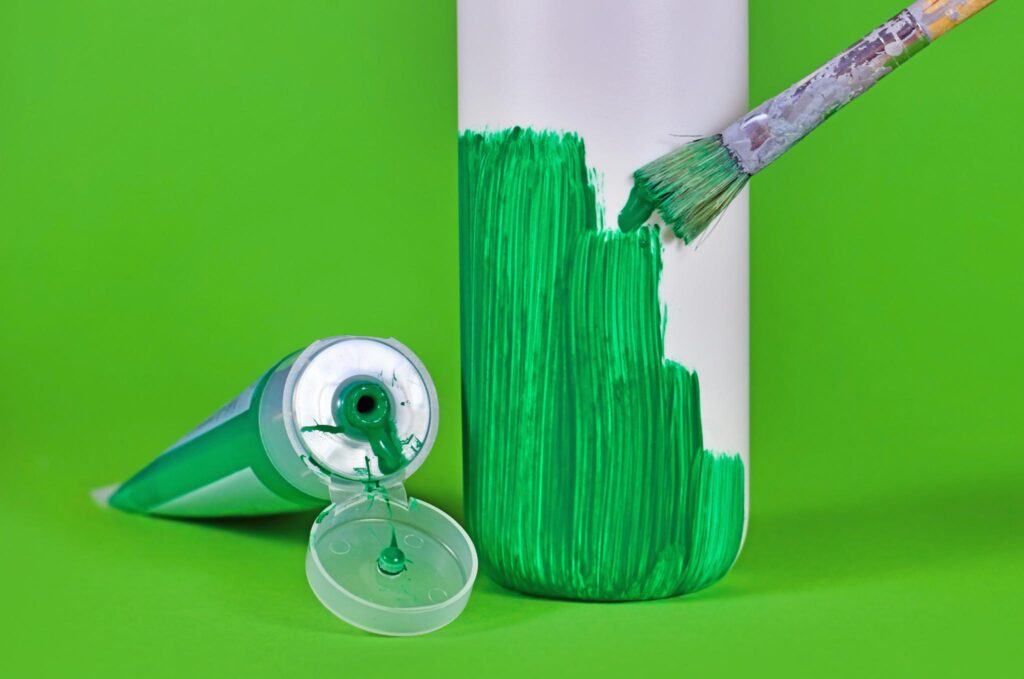
What to look for
So, what should you look for in sustainable health and beauty products? Many brands may claim to make eco-friendly products, but how do you know they really are green beauty products? There are some other things we can look for on the information labels of our products. Ideally, we want organic products free of microplastics and palm oil and against animal testing.
Read the ingredients to see if they contain any of the dirty dozen listed above. Do some research and read about the most sustainable beauty product brands. If you’re shopping at a farmer’s or local maker’s market, don’t be afraid to question the product ingredients before you buy.
Another way is to look for third-party certifications on the label like Certified B Corp, EWG (Environmental Working Group), Non-GMO Project Verified, Natrue, COSMOS, and USDA Organic.
Materials Matter
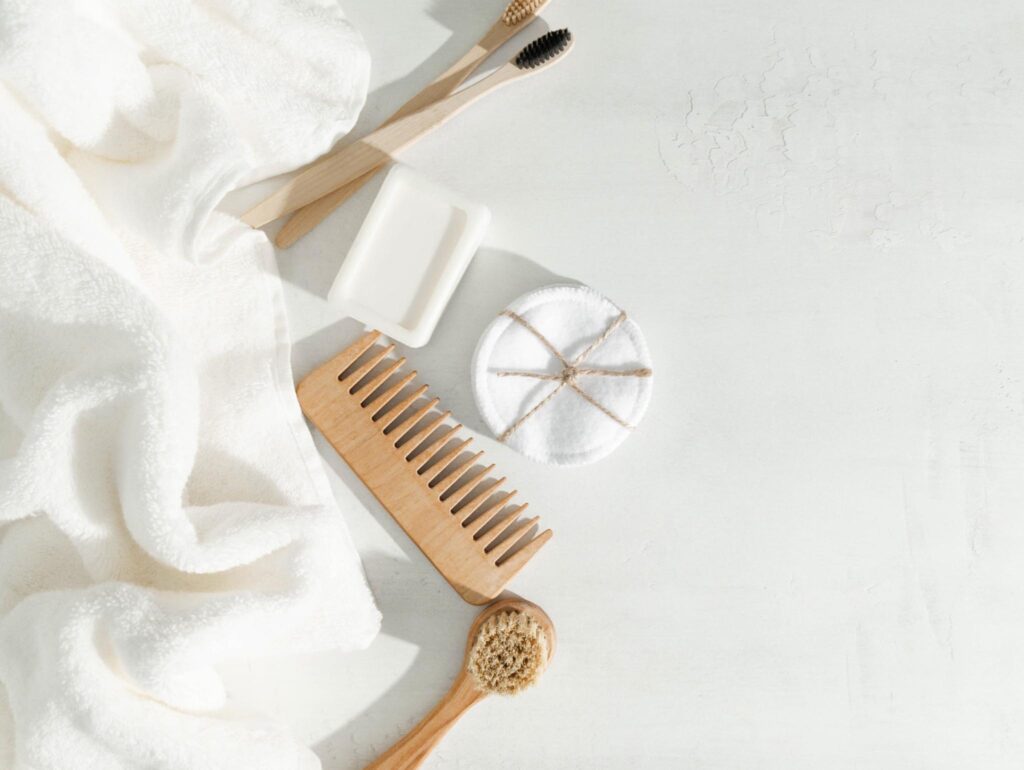
Find alternatives
By now, we know that anything designed to be used only once or twice and then thrown away is not sustainable. Thankfully, the cosmetic industry has started to turn to substitutes for single-use products to help us create zero-waste beauty routines.
Next time you find yourself throwing something out after one use, make mental note to look up if there are alternatives on offer. A few significant replacements you can try that I’ve done myself are reusable ear swabs, menstrual cups, and zero-waste razors.
Sustainable Materials
The material used to make our tools matters too. There are tons of sustainable health and beauty products on the market that use far more eco-friendly materials. Look for beauty tools such as combs, razors, hair, makeup, and toothbrushes made from post consumer recycled plastics or long-lasting materials such as metals or wood.
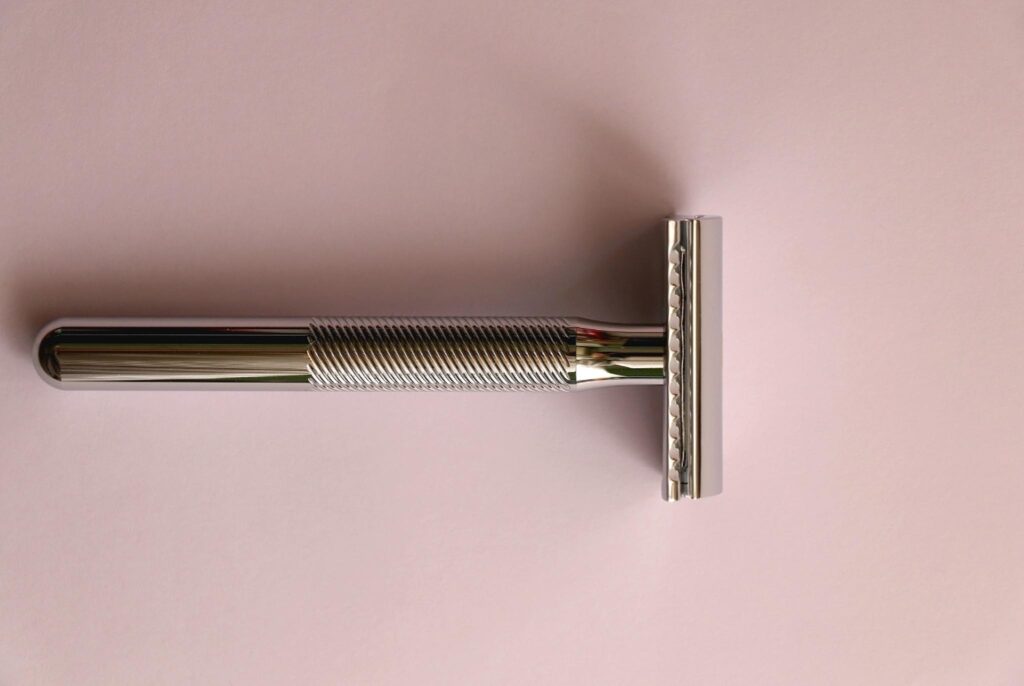
Create your Own
If you’re trying to be more sustainable on a budget, you could try making your own products. Now, more than ever, DIY beauty products are easy to create at home. The internet has you covered, from lip gloss to liquid eyeliners and nail color! As someone who lives a nomadic lifestyle, I find locating green cosmetics difficult. Choosing to be very minimal in my use of products and creating some of my own concoctions in reusable containers has been a lifesaver.
Hop over to Don’t Mess with Mama’s website and check out her 100+ DIY Beauty + Skin Care Recipes.
Don’t forget to be sustainable and do your best to buy local and ethically sourced ingredients with less packaging to make your DIY products! And remember that a homemade bar of soap, foot scrub, or exfoliation balm makes a great, sustainable gift too.
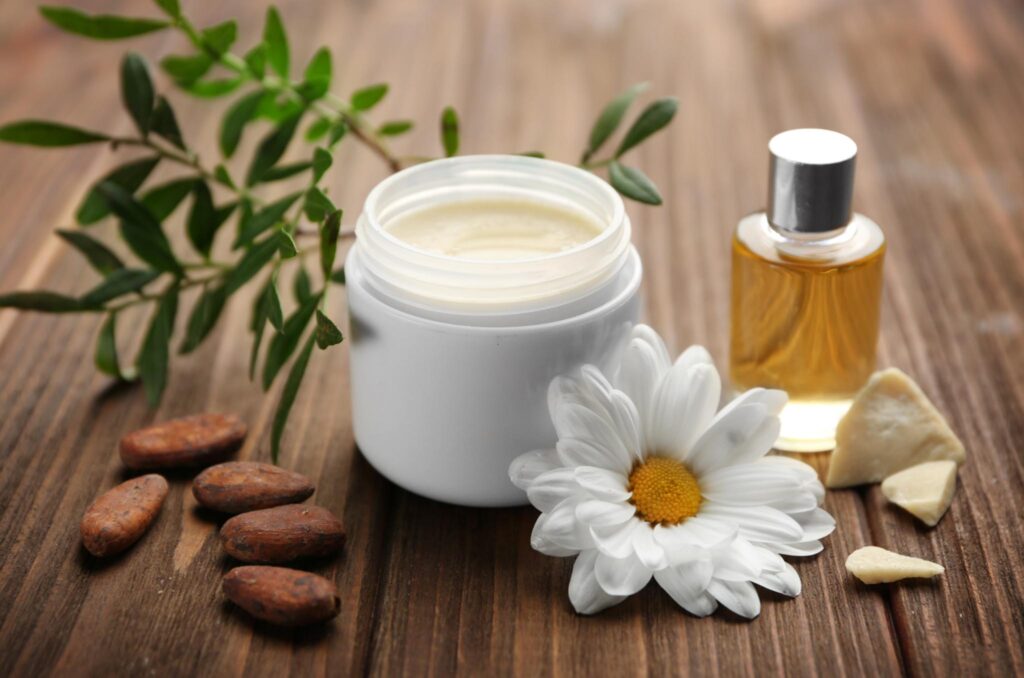
Other Considerations
Something else to consider when assessing the environmental sustainability of a beauty brand is its resource and waste management. Do a little digging to find out if your favorite brand uses green energy in its manufacturing or has water conservation and other sustainability initiatives in place.
storage and Care
Another way to ensure we are sustainable with our tools and beauty products is to care for them and follow storage instructions. Keep your hairbrush where the dog won’t use it as a chew toy, and store your products as instructed on the label. The less frequently we need to replace these things, the better.
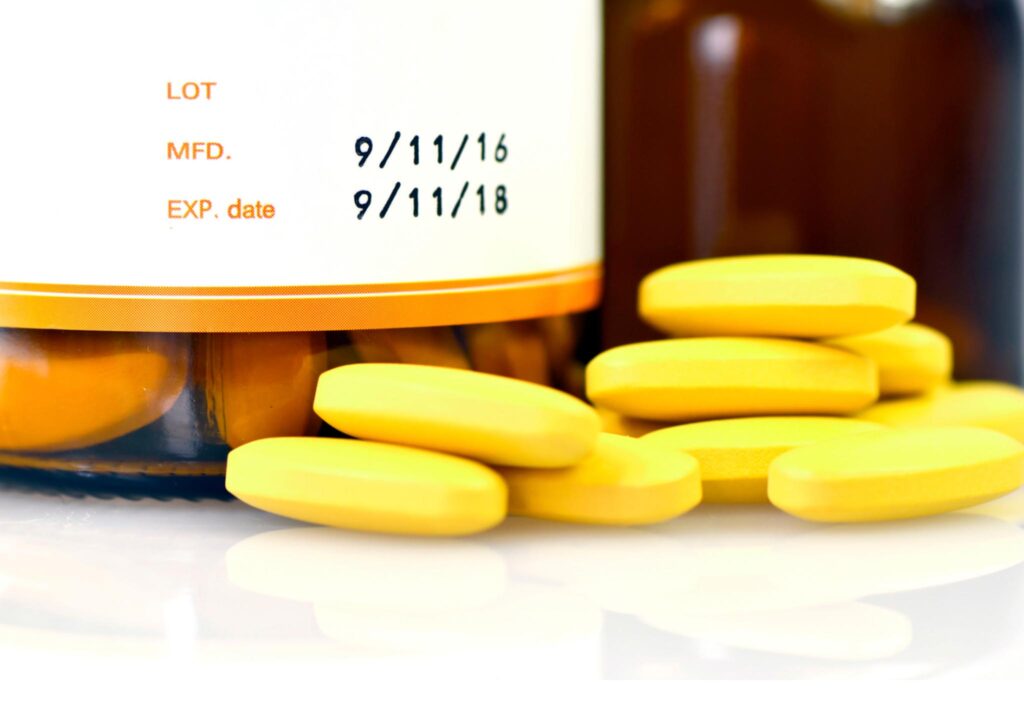
proper disposal
Is it truly time to dispose of your beauty products or tools? Certain products, like chemical sunscreen and some makeup do have an expiry date. If we’re talking about medication or products containing chemicals and medicinal ingredients, research how to get rid of it properly. Flushing expired medication or cosmetics down the toilet introduces potentially harmful ingredients into our waterways. Many pharmacies will accept your expired medication and products and dispose of them properly.
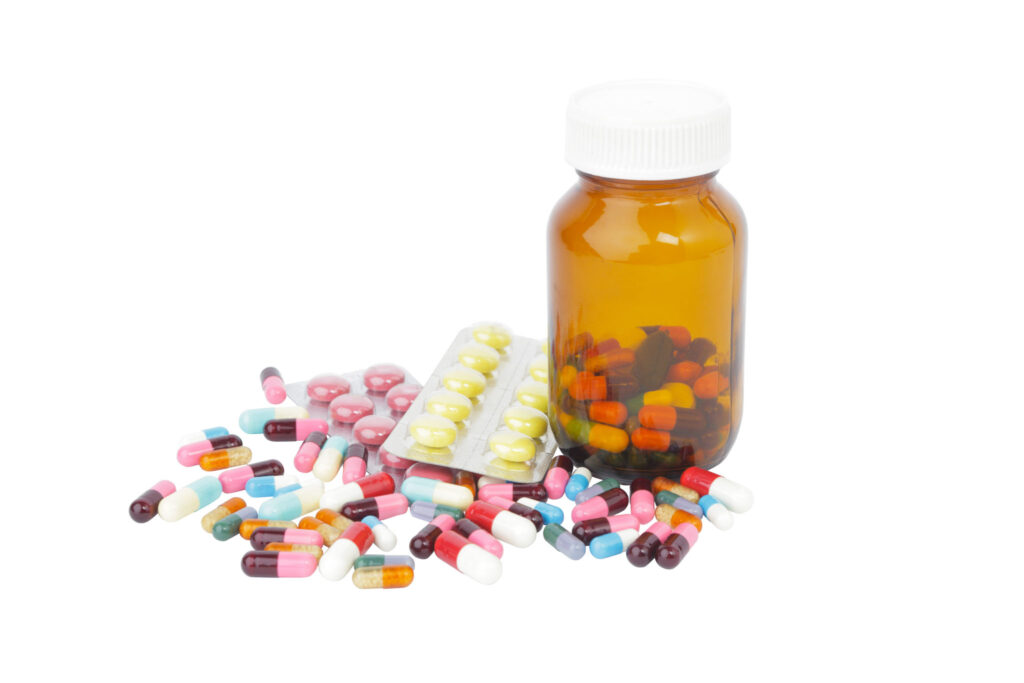
In using more sustainable products, we’ve made body-healthy choices, so let’s ensure we do that for the planet as well.
In Conclusion
Creating conscious grooming habits doesn’t have to be that difficult. Keeping a short list of what to look for and what to avoid in your phone can help immensely when buying a new product. Refusing to buy from over-packaged, toxin-laden beauty brands sends a message to the cosmetics industry to take corporate responsibility.
The best sustainable beauty brands are ethical and environmentally friendly and use locally-sourced organic ingredients. The good news is, once you’ve found the beauty brand that work for you, you can stop looking!
Remember, even one small change can make a big difference in the end. Whenever you feel overwhelmed with your sustainability goals, remember that every journey starts with just one step! Your path to sustainable beauty and health is no different.

